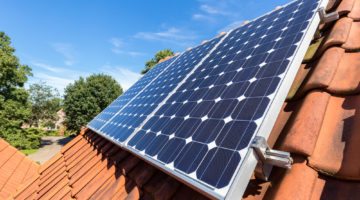
What is the Feed-in Tariff?
Apart from being the word that our intern Henry uses to describe Rihanna, FiT is the acronym for the government scheme known as the Feed-In Tariff.
The Feed-In Tariff is a scheme that the government set up back in 2010 to encourage growth in electricity generation from renewable microgeneration technologies, and it covers the following technologies:
What this really amounts to is that things like solar panels became much more financially viable for people to install and run. Once the panels are installed, the consumer can claim back on both energy generation and energy export. Essentially, the government putting money in your pocket both for how much energy you create and the amount put back into the central grid. This was on top of the savings to energy bills, given that generating your own energy means much lower bills.
Payments are guaranteed for a period of 20 years and 10 years for micro CHP.
When is the Feed-in Tariff ending?
Both the generation and export sides of the Feed-in Tariff will be closed to new applicants from 1st April 2019.
Why is the Feed-in Tariff ending?
It’s been a huge success, surpassing all expectations, so why is the Feed-in Tariff ending? Since the government introduced solar PV feed-in tariffs in the UK in 2010, installed capacity of renewables went from 9.3 GW at the end of 2010, to 38.9 GW by the end of 2017. Despite this, the government are still choosing to pull the plug.

The other reason is that the cost of renewables, such as solar PV, has fallen enough that schemes like this are no longer necessary. This is an argument that we at the GreenAge don’t take all that seriously. While it’s true that they are getting cheaper, renewable microgeneration installations like those funded up by the Feed-in Tariff are still expensive, and the removal of these subsidies will see a steep decline in their implementation. For most domestic dwellings in the UK, many of the technologies covered simply don’t make financial sense without the Feed-in Tariff. Come spring 2019 we can therefore expect to see the UK solar power industry take something of a nosedise, at least for a while.
Ideally, battery storage will improve enough in the next few years that solar becomes a more practical option even without the financial intervention from the government.
What will replace the Feed-In Tariff?
Back in 2017 the Treasury announced that “there will be no new low-carbon electricity levies until 2025”. This means no replacement for the Feed-in Tariff, at least until then.
That’s since been amended for the Smart Expert Guarantee. You can read about it here.
Will my Feed-in Tariff payments end?
No, absolutely not. If you’re an existing Feed-in Tariff recipient, then your payments will continue until the end of your contracted period. Check your paperwork to see when this is.
Should I still get solar panels?
Yes!
At the time of writing, it’s October 2018 – there are still 6 months to go before the Feed-in Tariff stop accepting new applications. If you were to get solar panels installed now, you could still qualify for the Feed-in Tariff and receive 25 years of payments.
Of course not everyone wants solar panels, but if you’re considering getting them then the time is NOW before the Feed-in Tariff ends.
For more info on getting solar PV installed, check out our ultimate guide here.
Think we missed something? Do you have a different opinion?
Comment below to get your voice heard…












When will the smart export guarantee come in to effect?
Hi Michael,
At the moment we’re expecting the SEG to come in around 2021.
Harri
I had 10 Solar Panels installed on my house back in August 2018, truth be known I was paid £129 from August 2018 through to August 2019. A measly £129. At that rate of income it will take approx 49 years to pay for this installation. I’m gutted, just over £7,650 to have it installed. Sadly I will never se a Profit. True as I’ve written.